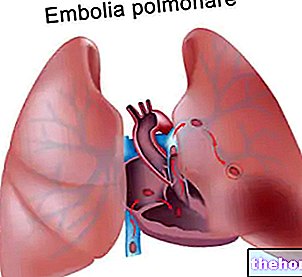Generality
Treatment of chronic myeloid leukemia (CML) includes several therapeutic options that can keep the disease under control for prolonged periods of time. Routine blood and bone marrow tests and frequent evaluation by a haematologist or oncologist can monitor the progression of the cancer.

From the results of medical investigations (blood count, cytogenetic and molecular tests) it is possible to understand:
- The degree of effectiveness of the treatment over time and the evolution of the response to therapy;
- If the disease is no longer responsive to drugs (resistance to therapy).
Monitoring and response to therapy
Correct monitoring of the course of the disease is essential to verify the efficacy of the therapy and, consequently, to be able to intervene promptly in case of failure of the treatment.
Cytogenetic analysis and molecular biology investigations are used, as well as for diagnostic purposes, also to evaluate the degree of response to the therapeutic protocol and to highlight any persistence of disease after treatment (study of minimal residual disease):
- Complete Hematological Response: When the therapy starts to have an effect, the number of leukemia cells is reduced. Hematology tests are no longer able to detect aberrant clones, but this is possible with cytogenetic analysis.
- Complete Cytogenetic Response: obtained when the presence of the Philadelphia chromosome (Ph) is no longer highlighted by conventional cytogenetic analysis (standard approach to monitor the response to treatment) or by fluorescent in situ hybridization (FISH), a technique that evaluates the percentage of Ph + bone marrow cells. The cytogenetic analysis, performed on a fine-needle aspirated bone marrow sample, is also the only method for determining the presence of any chromosomal alterations, additional to the Philadelphia chromosome, with a prognostic role.
- Complete Molecular Response: it is reached when the molecular analysis is not able to detect the expression of the hybrid gene BCR / ABL. The therapy has proven effective and the molecular signals, which promote the production of the bcr-abl proteins, are so low that they cannot be detected even with highly sensitive tests such as molecular ones. Increased transcript levels, which are being monitored, may indicate loss of response to treatment.
The achievement of these outcomes represents a very important result: many studies show that patients, with a complete cytogenetic and molecular response, have a very high probability of surviving for a long time, without progression of the disease to the accelerated and / or blast phase.
Many factors can influence the efficacy of the therapy and for this reason, in the initial stages, it is recommended to proceed with tests after 3, 6, 12 and 18 months.
The information obtained so far from clinical studies, which define the optimal response and failure at different times of therapy, have led to the formulation of a monitoring scheme, which must be followed for the correct management of the patient (indications proposed by European Leukemia-Net):
The haematologist (or oncologist) will be able to establish some objectives and verify the efficacy of the therapy in the specific clinical case, as patients react differently to the therapy and not all are able to reach the optimal therapeutic milestones within the foreseen period of time. .
Therapeutic options
The main goal of treatment for CML is to "achieve complete molecular remission: the disease is controlled by the treatment (even if it does not completely disappear) and the number of pathological clones produced is sufficiently limited not to cause any symptoms. most people cannot get rid of leukemia cells completely, treatment can help achieve long-term remission of the disease.
Therapeutic goals may include:
- Limit the manifestation of symptoms of chronic myeloid leukemia;
- Restore normal parameters related to blood cell counts;
- Reduce the number of Philadelphia chromosome positive leukemia cells (Ph +) and molecular signals (BCR / ABL transcripts);
- Aim for the disappearance of the Philadelphia + chromosomes (complete cytogenetic response).
Conventional antiblastic drugs
Some antiblastic drugs, such as busulfan (alkylating) and l "hydroxyurea (specific inhibitor of DNA synthesis), have been used, especially in the past, to achieve cytoreduction and control of the disease in the chronic phase. Conventional treatment resulted in improved quality of life, but was unable to significantly change the natural history of the disease or prevent progression to the accelerated / blast phase.
Recombinant interferon-alpha
From the early 1980s, the introduction of interferons allowed to observe, in addition to the reduction and normalization of the granulocyte share, the achievement of the negativization of cytogenetic and molecular tests, inducing a longer duration of the chronic phase, with consequent reduction of the evolution in accelerated and / or blast phase. The interferon -alpha has reduced the role of conventional CML therapy: this drug is able to induce a complete cytogenetic response in 20-30% of patients, specifically interfering with the translation of proliferative signals in Ph + cells and inhibiting cell multiplication tumor progenitors. Interferon-alpha also acts with an indirect mechanism on the survival of leukemic cells, decreasing their cell adhesion and amplifying the activity of the cells of the immune system.
A limitation to the use of this drug is given by its non-negligible toxicity. The side effects of interferon include fatigue, fever and weight loss. In order to improve the results achieved, interferon has been combined with other cytotoxic agents. Only the association of interferon with cytosine arabinoside (ARA-C) has been shown to offer better results than interferon alone, without however an evident survival advantage.
Allogenic bone marrow transplant
The transplantation of stem cells from a healthy donor compatible with the recipient (allogeneic transplant) has represented for years the most frequent therapeutic indication and still today constitutes the only treatment capable of definitively eradicating the neoplasm.
This procedure, when performed in the chronic phase, can result in a five-year disease-free survival in approximately 50% of cases.
Allogeneic bone marrow transplantation involves a first phase of destruction of all (or almost all) Ph + cells through conditioning therapy (chemotherapy in combination with total body irradiation), followed by reconstitution of the hematopoietic marrow by the infused donor stem cells . Furthermore, donor marrow lymphocytes contribute to control and / or eliminate any Ph + cells with an immune-mediated effect called "graft versus leukemia". The response to therapy can be monitored by assessing whether or not the molecular alterations typical of chronic myeloid leukemia have disappeared. The allogeneic bone marrow transplant represents the therapeutic treatment able to "cure" CML, but unfortunately involves a rate of failure due to fatal toxicity and / or relapse. This procedure, in fact, is very demanding and can be influenced by the age of the patient. patient and the precocity of the transplant (months or years from the diagnosis of the chronic phase): due to its potential danger, it is practicable only in patients under the age of 55, without further concomitant pathologies. Therefore, allogeneic transplantation constitutes a real therapeutic opportunity for only a minority of patients with CML (also considering the difficulties of finding a compatible stem cell donor).
More recently, in subjects with chronic myeloid leukemia ineligible for allograft (age, lack of donor, refusal, etc.), autotransplantation has been proposed. The patient's bone marrow, reinfused after an "intentionally adequate cytocidal therapy for Ph + cells (with antiblastic + interferon), would reconstitute itself with a prevalent re-expansion of Ph- cells.
Imatinib mesylate (Glivec ®)
The history of chronic myeloid leukemia treatments has been revolutionized by the introduction of the first tyrosine kinase inhibitor (Imatinib mesylate), which has greatly contributed to improving patients' quality of life.
Imatinib is a specific inhibitor of BCR / ABL, designed after understanding the molecular biology of the disease and used in the treatment of Ph + chronic myeloid leukemia.
The drug is able to induce complete molecular cytogenetic remission in 80-90% of patients and is also active in myeloid neoplasms with eosinophilia and involvement of PDGRF (platelet-derived growth factor, serum mitogen involved in many pathological states, which promotes chemotaxis and proliferative capacity).
Imatinib selectively blocks the tyrosine kinase activity of BCR / ABL through an inhibitory mechanism of ATP: the drug binds the high energy molecule (ATP) available in the specific domain of the BCR / ABL kinase, preventing the phosphorylation of other substrates and blocking the cascade of reactions that would be responsible for the generation process of Ph + leukemic clones. The dose used of this molecule (imatinib methysilate) varies from 400 mg / day to 800 mg / day in relation to the phase of the disease and the response. Currently, it is the drug of choice for the treatment of CML due to its remarkable efficacy. The side effects, reversible with the suspension and / or reduction of the dose, can be different (increased transaminases, nausea, skin rashes, fluid retention, etc.).
Cases presenting resistance to the drug over time have been observed (for example patients with advanced disease) and biological-clinical criteria have been identified to define the type of response to treatment. The mechanisms responsible for this resistance appear to be multiple (mutations of the kinase domain, amplification / over-expression of BCR / ABL, clonal evolution ...). In these cases, continuing Imatinib therapy is no longer appropriate.
For patients with these conditions the possible options are:
- The allogeneic transplant;
- Conventional therapy (hydroxyurea, busulfan, etc.);
- L "interferon;
- Experimental therapy (with 2nd generation tyrosine kinase inhibitors).
2nd generation tyrosine kinase inhibitors
Failure of Imatinib therapy is associated with progression of accelerated and / or blast phase chronic myeloid leukemia and carries a particularly poor prognosis. In recent years, pharmacological research has allowed the use, in clinical practice, of second generation tyrosine kinase inhibitors, active in patients who have developed resistance to Imatinib: Dasatinib (Sprycel ®) and Nilotinib (Tasigna ®) are used in patients with chronic phase and / or progression CML refractory to Glivec ® and are able to re-induce complete and persistent haematological, cytogenetic and molecular responses. Numerous studies have shown, however, that the Ph + clone - due to its genetic instability - it can develop mutations of the BCR / ABL kinase domain and prove resistant to various inhibitory drugs. Other molecules in the experimental phase (3rd generation inhibitors) are aimed at specific targets of chronic myeloid leukemia; in particular, they are able to sensitize leukemic cells Ph + with specific mutations (example: Mk-0457 for resistant CML and with T315I mutation, which directly affects t the imatinib binding site).
Other articles on "Chronic Myeloid Leukemia Therapy"
- Chronic Myeloid Leukemia: Chronic Myeloid Leukemia: Diagnosis
- Chronic Myeloid Leukemia: Definition, Causes, Symptoms





-cosa-significa-quando-preoccuparsi.jpg)

















-nelle-carni-di-maiale.jpg)




